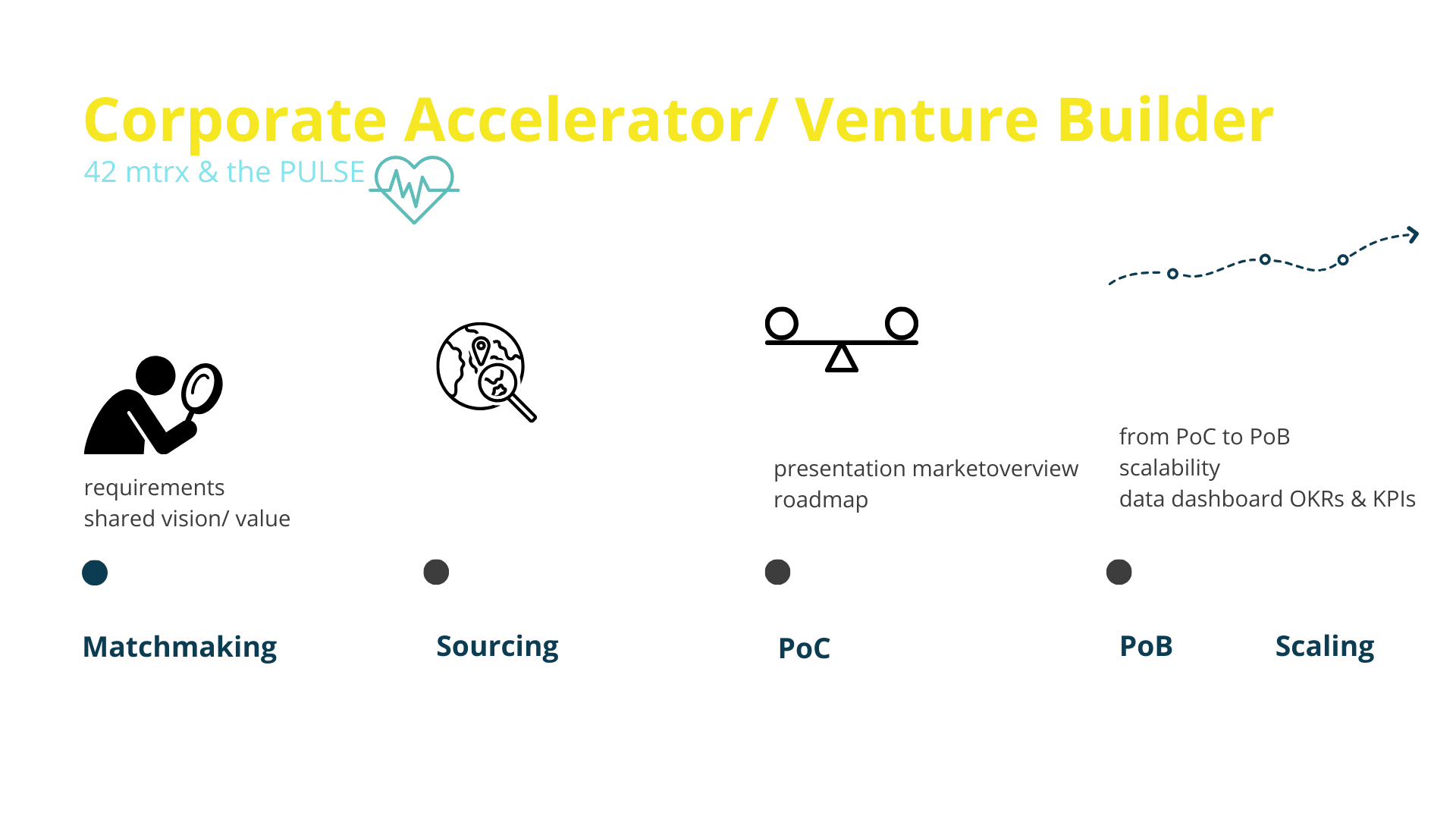In today’s rapidly evolving business landscape, companies are constantly seeking ways to innovate and stay ahead of the competition. One increasingly popular approach is open innovation, which involves collaborating with external partners to unlock new ideas and accelerate the innovation process. Corporate accelerators, with their focus on fostering startup growth, have emerged as a valuable tool for implementing an open innovation strategy.
Understanding Open Innovation
Definition of Open Innovation
Open innovation represents a paradigm shift from the traditional, closed innovation model where companies relied solely on internal r&d for new product development. In contrast, open innovation emphasizes the importance of leveraging external sources of innovation. This involves actively seeking ideas and solutions from outside the organization, including startups, universities, and other research institutions, to enhance the innovation process and accelerate the development of new products and services.
Key Components of Open Innovation Strategy
An open innovation strategy hinges on several key components. Firstly, it requires a shift in corporate culture, fostering a culture of innovation that embraces collaboration and external partnerships. Secondly, establishing an effective innovation platform is essential for managing and integrating external ideas. Thirdly, forming strategic partnerships with startups and other external entities allows companies to gain access to new technologies and accelerate the development of new innovation.
Benefits of Open Innovation for Corporations
Adopting an open innovation strategy offers numerous benefits for corporations. It enables them to access a wider range of ideas and technologies than would be possible through internal R&D alone. This can accelerate the innovation process, leading to faster product development and a quicker time to market. Furthermore, open innovation allows companies to share the risks and costs of innovation, while also gaining access to new markets and business models. By partnering with entrepreneurial startups, corporates can tap into their agility and innovative spirit to foster a culture of innovation within their own organizations. For example, companies like BMW and Unilever have successfully used open innovation to innovate and improve their products and services.
The Role of Corporate Accelerators
What are Corporate Accelerators?
Corporate accelerators represent a structured program, often run by established corporates, designed to foster the rapid growth of early-stage startups. These programs offer a range of resources, including mentorship, funding, workspace, and access to the corporate’s network. The goal is to accelerate the startup’s development, refine its business models, and prepare it for potential partnerships or investment from the corporate partner, ultimately fostering new innovation.
How Corporate Accelerators Foster Innovation
Corporate accelerators play a crucial role in fostering innovation by creating a bridge between established corporates and entrepreneurial startups. By providing startups with resources and mentorship, accelerators help them to develop their ideas and solutions more quickly and effectively. This process helps corporates unlock new ideas, gain access to new technologies, and stay ahead of the competition. Moreover, corporate accelerators can help corporates foster a culture of innovation by exposing employees to the entrepreneurial spirit and agile approach to innovation that characterizes many startups.
Differences Between Corporate Accelerators and Traditional Innovation Models
Unlike traditional r&d departments or internal innovation initiatives, corporate accelerators leverage external sources of innovation and focus on rapid experimentation and iteration. Traditional innovation models often operate within the confines of the corporate structure, which can stifle creativity and slow down the innovation process. In contrast, accelerators encourage open innovation and collaboration, which allows them to tap into a wider range of ideas and perspectives. This allows them to develop new products and services faster. Corporate accelerators accelerate the development of new technologies and business models.
Accelerator Programs and Their Impact
Designing an Effective Accelerator Program
Designing an effective acceleration program requires careful consideration of several key factors. Firstly, it is important to define clear goals and objectives for the program, such as identifying specific areas of innovation or new markets to explore. Secondly, the program should be structured to provide startups with the resources and support they need to succeed, including mentorship, funding, and access to the corporate’s network. The program should foster a culture of innovation, and promote open innovation.
Measuring Success of Accelerator Programs
Measuring the success of acceleration programs can be challenging, but it is essential for demonstrating the value of these programs to stakeholders. Key metrics to track include the number of startups that secure funding or partnerships, the revenue generated by participating startups, and the number of new products and services launched as a result of the program. The impact of the open innovation strategy should be considered. Measuring the cultural changes and increased exposure to new technologies should also be examined.
Case Studies of Successful Accelerator Programs
Numerous corporates have successfully implemented accelerator programs to drive open innovation and accelerate growth. BMW STARTUP GARAGE BMW’s Startup Garage, for instance, provides startups with access to its resources and expertise, fostering new innovation in the automotive industry. Unilever’s Foundry program partners with startups to develop new technologies and business models, leveraging their entrepreneurial spirit to drive innovation in the consumer goods sector. UNILEVER FOUNDRY These case studies demonstrate the potential of accelerator programs to unlock new sources of innovation and accelerate the development of new products and services.
Partnerships in Open Innovation
Building Relationships with Startups
Building strong relationships with startups is paramount in the realm of open innovation. Corporates that actively seek out and nurture these relationships are better positioned to leverage the entrepreneurial spirit and agility of startups. This partnership allows the corporate to gain access to new technologies and innovative business models, ultimately accelerating its own innovation process and fostering a culture of innovation.
Co-Creation and Collaborative Innovation
Organizations engage startups to move beyond the silo of internal r&d. This accelerates innovation cycles via co-creation. Embracing co-creation and collaborative innovation is essential for successful open innovation. By fostering an environment of open communication and shared goals, corporates and startups can effectively combine their expertise to develop new products and services. This collaborative approach allows both parties to benefit from the partnership, fostering new innovation and accelerating product development.
Insights from Senior Corporate Entrepreneurs
Senior corporate entrepreneurs play a vital role in championing open innovation within their organizations. Their insights and experience can help to navigate the challenges of partnering with startups and foster a culture of innovation. By advocating for open innovation strategies and promoting internal support for accelerator programs, they can unlock new opportunities for innovation and drive corporate growth, accelerating new business models.
Challenges and Solutions in Innovation Strategy
Overcoming Barriers to Open Innovation
Despite its numerous benefits, open innovation is not without its challenges. Overcoming barriers such as cultural differences, intellectual property concerns, and a reluctance to share information is crucial for successful implementation. Corporates need to foster a culture of trust and collaboration, establish clear guidelines for intellectual property management, and develop effective communication channels to unlock the full potential of open innovation.
Transitioning from Closed Innovation to Open Innovation
Transitioning from a closed innovation model to open innovation requires a significant shift in mindset and corporate strategy. It involves embracing external sources of innovation, fostering partnerships with startups, and creating an innovation platform that facilitates collaboration. This transition requires strong leadership, a commitment to change, and a willingness to experiment with new approaches to innovation. This ensures they can innovate and unlock new innovation.
Utilizing Design Thinking in Innovation Strategies
Design thinking offers a valuable approach to innovation strategies, particularly in the context of open innovation. By focusing on user needs and iteratively prototyping solutions, design thinking can help corporates and startups to develop new products and services that truly meet customer needs. Incorporating design thinking into the acceleration program and the innovation process can lead to more effective and impactful innovations, foster innovation, and accelerate the development of new technologies.
Learn more on Matchmaking
With our open-innovation framework and our entrepreneurial background we facilitate and train organisations to create their own dedicated Corporate Accelerator. You can also testdrive our matchmaking process.






